Will AI Change the way we Fridge Forever?
Did you grow up watching the Jetsons? Ever dream of a world of robot housekeepers and ozone-scraping luxury smart homes that can dress and groom you by themselves? Technological advances in the kitchen and home are progressing at lightning speed. Great technological gains in the home have been made over the last decade and are on pace to reach unprecedented levels of automation in the 2020s.
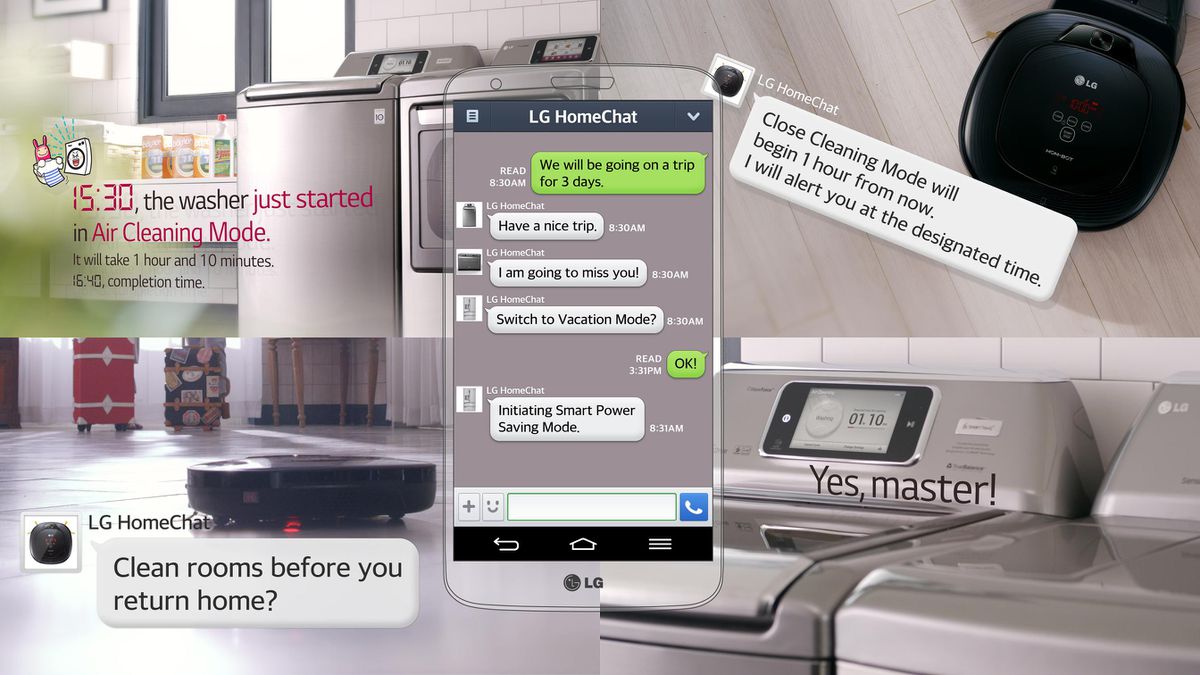
The Launch of LG's HomeChat
The era of the smart kitchen had its genesis in 2014 when LG launched a new line of smart appliances equipped with HomeChat which enabled people to communicate with their appliances through the Line mobile messaging app.
LG's Internet-connected fridges allowed communication with the homeowner all day long via text messages. You could text them questions about what was in stock. The fridge used a camera to send a photo of its insides to its owner.
Investing in the future of the home, Samsung acquired SmartThings for a reported $200 million that same year.
From that point forward the idea of an internet-connected fridge would continue to grow. Wired published an article in 2014 that looked at the "wonderful" possibilities of internet fridges.
In 2015, Samsung finally launched its SmartThings Internet of Things Hub. This enabled users to connect with various Samsung home devices including refrigerators, washing machines, air conditioners, ovens, etc.
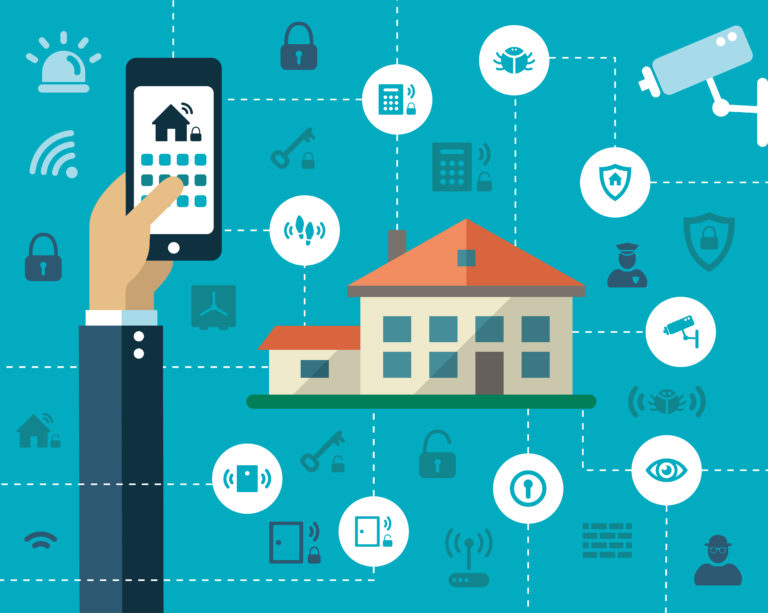
"Internet of Things" was an idea that Samsung had for creating a home where everything was connected to the internet - creating "swarm intelligence" from individually dumb devices. Bins, toasters, washing machines and lights would be able to talk to each other for automatic, more efficient control and monitoring.
In the same year, GE launched Chef Connect. This allowed appliances to speak to one another, providing the ultimate automated experience through their Bluetooth enabled technologies.
In 2016, a company called June made an "intelligent oven" for lazy cooks complete with a 2.3-GHz quad-core NVIDIA processor, lots of sensors and a dose of artificial intelligence. It cooked a variety of foods simply using preset programs. June went on to reveal its second-generation oven in 2018, that not only cooked faster and smarter but, at $600, was significantly cheaper (about half the original cost).
Family Hub
It wasn't until 2018 that Samsung announced the launch of a smart refrigerator called the Family Hub in 2018. The smart fridge integrated both Samsung's Bixby voice assistant (launched 2017) and SmartThings Internet of Things Hub (launched 2015).

Samsung's Family Hub refrigerators have taken the home appliance market by storm ever since and driven demand for wifi connected appliances to new heights. Easier meal planning, better family scheduling, and even entertainment at your fingertips are just some of the benefits of a connected family centre.
Moving into 2019, Wifi connected appliances continued to gain market share as manufacturers innovated towards a fully connected and integrated appliance suite.
LG InstaView ThinQ
While LG has been in the smart fridge game for a while, its 2019 upgrade - ThinQ - added AI to the mix, allowing it to talk to other LG ThinQ devices -informing the dishwasher that a big load was on the way, for example.
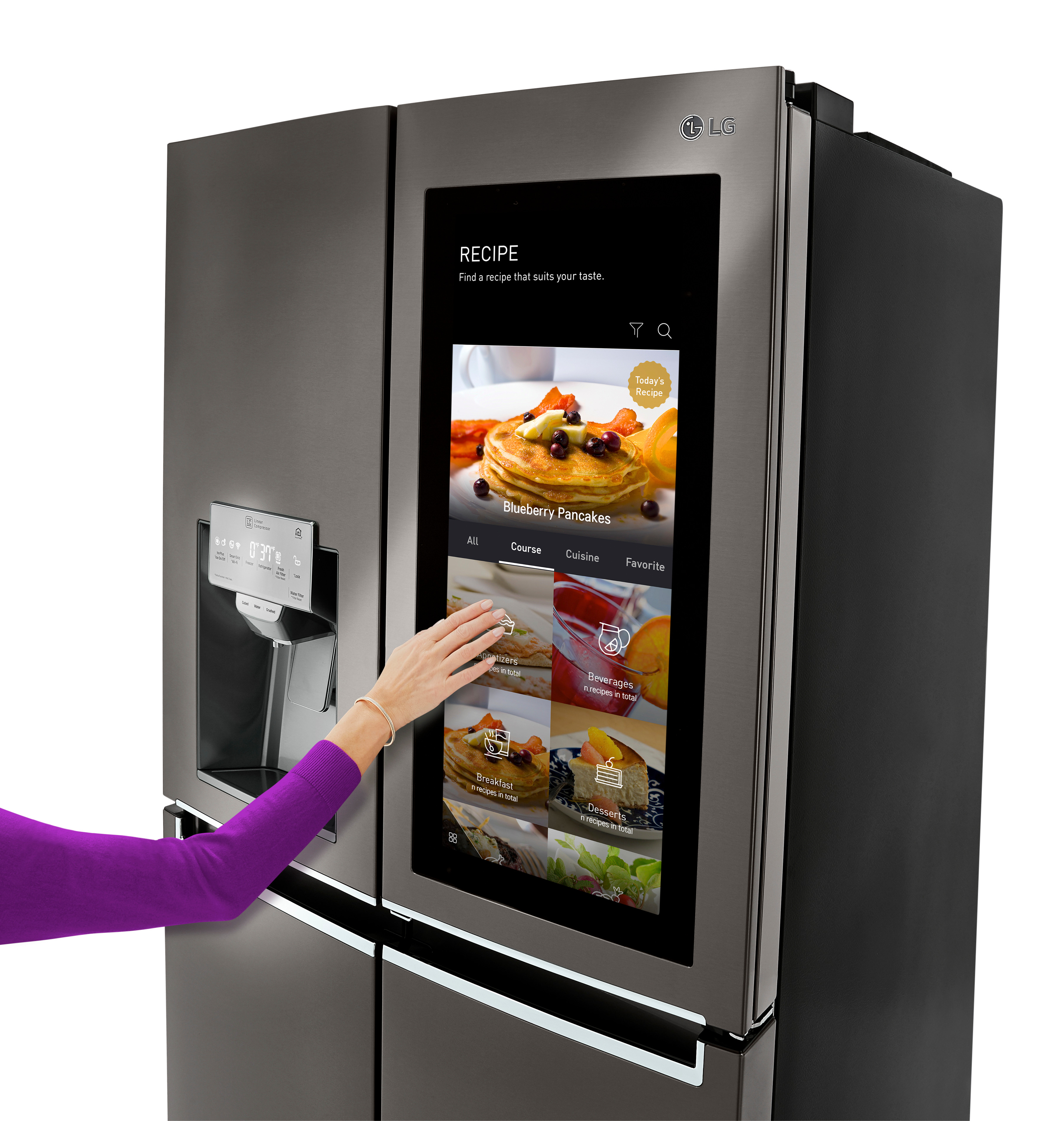
LG's AI platform, the Instaview ThinQ, also had Alexa (launched 2014) built in to read out recipes and let you add items to your shopping list to refill ingredients, as well as being a bit of an entertainment hub. The fridge boasted a 29-inch screen on the front, running webOS. There were apps; some for making notes, leaving doodles for your family, or inputting specifics on the contents of your fridge. A menu of virtual Amazon Dash buttons let you re-order whatever you needed with just one tap.
Two taps on the display would turn it transparent, so you could see inside and check out the number of beers you have left. A panoramic camera is in there too, which you can view from your smartphone. Bluetooth speakers embedded at the top of the fridge let you play music from any compatible device so you can rock out while cooking.
KitchenAid Smart Oven
With a series of powered attachments, this wall oven can become an indoor grill, baking stone and steamer, as well as do all the normal oven things. Just like our favourite stand mixer, the attachments plug into a powered hub, plus you can control the whole cooking process on your smartphone, for example you can start pre-heating while you're on your way home or check you remembered to switch it off when you've left the house.
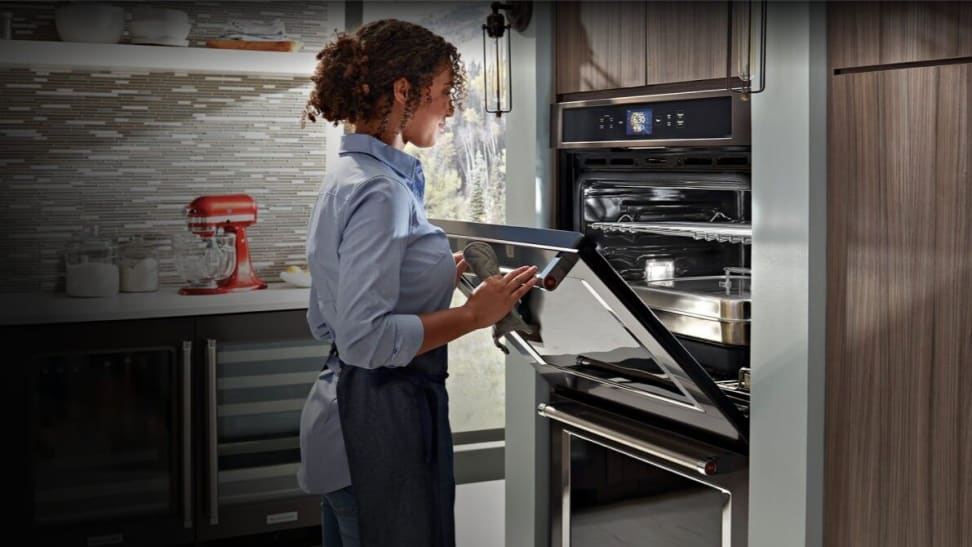
The KitchenAid Smart Oven is also Google Assistant (launched 2016) and Alexa-compatible, so you can direct it all with just your voice.
What we like here is that this smart oven isn't just about being connected, it's also about finding other ways to use technology to improve and enhance the cooking process for people with all abilities.
Multi-Door Refrigeration
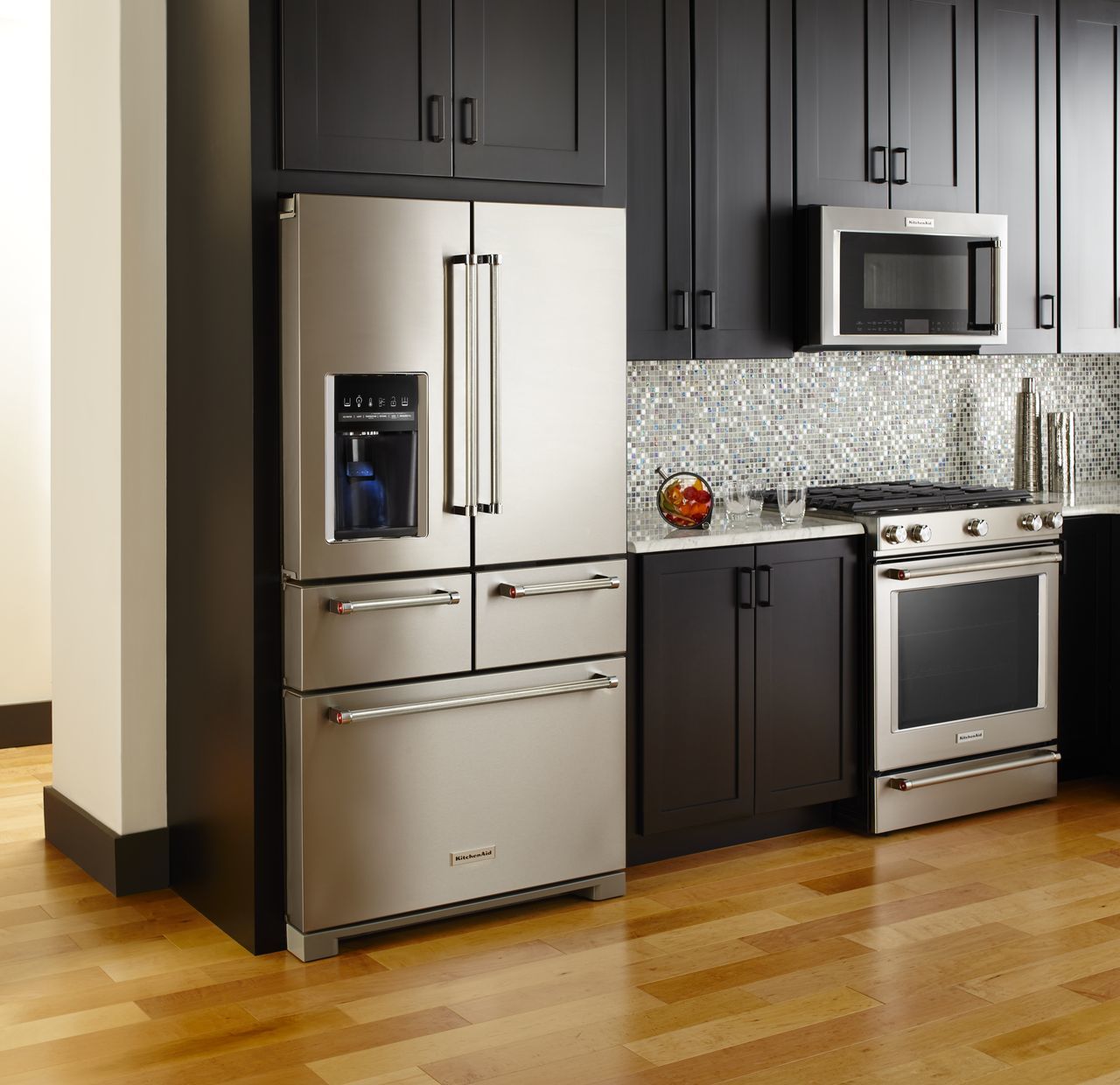
2019 saw manufacturers of the already popular french door refrigerators continue to innovate on the bottom mount design. Flexible french-door refrigeration continued to grow - 4, and 5 drawer models now share the market with the innovative flexible split 4-door design. Programmable and convertible compartments allow for more control, more convenience and also better food preservation.
Induction Cooking
The most precise, safest and efficient cooking method available, induction cooking continues to expand as consumers discover the benefits of electromagnetic technology. In 2019, manufacturers made bigger investments in induction cooking. This now possesses about 8% of the market share for cooktops and ranges.
The Next Decade
According to Statista, the future of smart homes is exciting and there will be around 31 billion devices connected to the internet by 2020, and that number is supposed to grow to 75.4 billion by 2025.
The smart home trend is expected to ramp up in the new decade and will expand further into the kitchen, which experts say is poised for yet another reinvention. The next wave will be fueled by smart appliances, voice technology and 3D printers.
Computer-graphics company Nvidia is working on a smart robotic arm that can act as its owner's personal sous chef, doing everything from slicing and dicing veggies to helping with cleanup; it could be particularly useful for busy parents or disabled users. But do you think it would take out the enjoyment of cooking?
We can expect continued demand for operating tools as internet-enabled technology becomes more and more common in the home. In addition to new innovations, Smart Appliances will continue to improve self-diagnostic tools and increase energy efficiency.
Samsung's Family Hub Fridge, for example, could change the way we 'fridge' forever. As connectivity improves expect the Hub to take a leading role in the integration of your kitchen appliances and perform tasks like notifying you when food is going out of date or finding you coupons for topping up your milk and eggs. Not only would it keep your fine wine chilled but it could also adjust its temperature based on the kinds of food it contains, remind you to drink more water, and automatically order a gallon of milk from the store before you ran out. Sounds like a must-have in any busy household!
Whirlpool has already teased a concept for the smart kitchen. It includes touch-screens that populate recipes from Pinterest, a refrigerator that reminds you when you're low on milk and the ability to heat up a meal, such as a bowl of soup, by placing it anywhere on the counter, thanks to detection sensors.
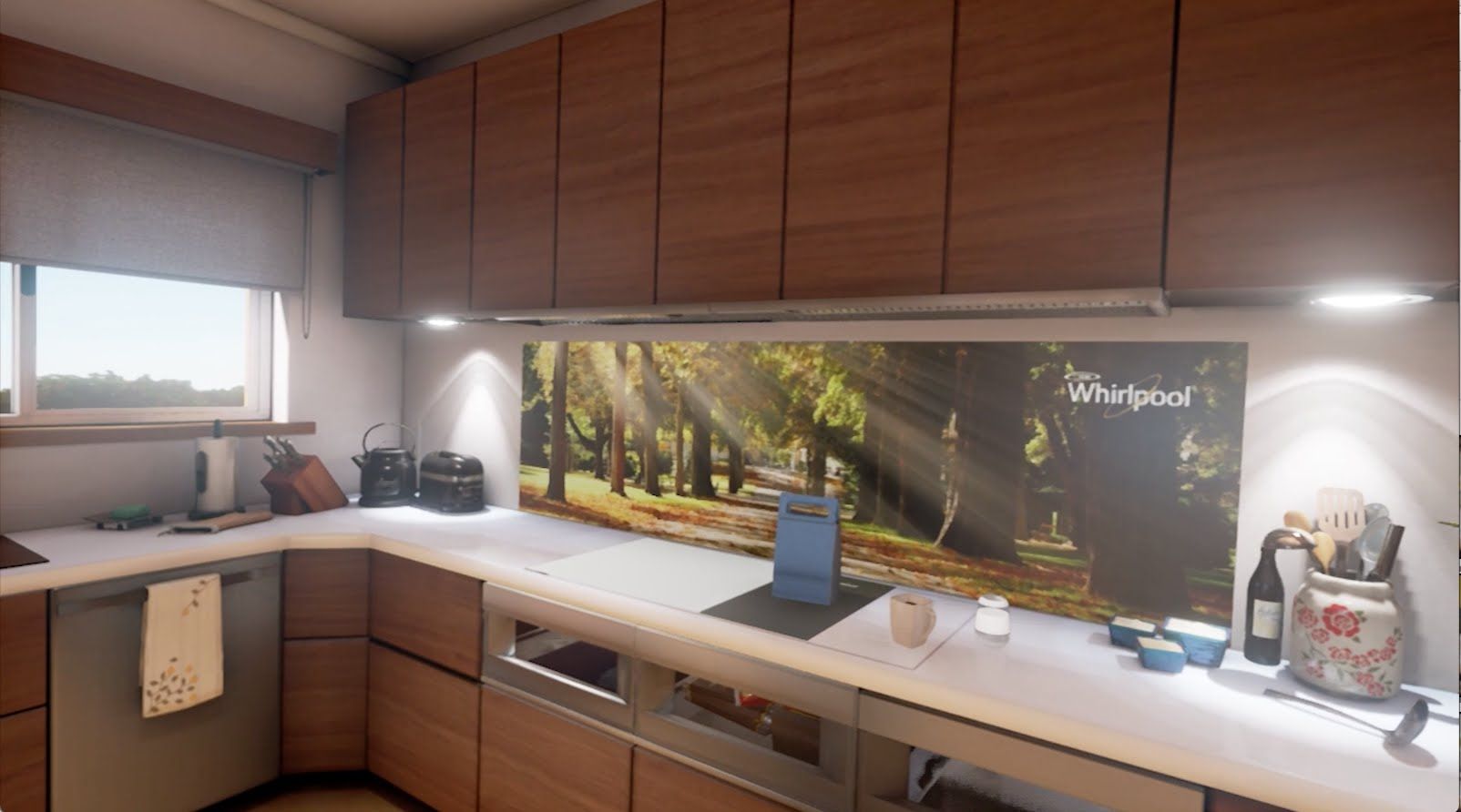
In the future, smart surfaces all over the house have the potential to respond to anything placed on them: A countertop could help keep a mug of coffee warm, or make sure a beer stays ice-cold.
The last decade has seen big names like Samsung and LG putting the idea of the Smart Home - and the Smart Kitchen - into action. In particular, the refrigerator has emerged as the main communication hub for Smart Kitchen products and will likely continue to be so in the future.
And the development is ongoing. As early as January 2, 2020, Samsung and LG showcased updated versions of the Family Hub and second-generation InstaView ThinQ fridges - both of which are set to tout AI-equipped cameras that can recognize food inside and let users know what items they're short on, even making meal suggestions based on the ingredients they still have. Perhaps eventually such fridges will be capable of analyzing food in terms of freshness (as the ultimate food safety tool). This would definitely be helpful, as would a self-cleaning fridge.
Whatever happens, innovations in artificial intelligence stand to upend almost everything in our lives, including our homes. You might already be using some kind of AI-powered voice-assistant gadget to get the latest news or weather forecast every morning. But in the smart home of the future, those AI platforms could serve as the brain for entire homes.
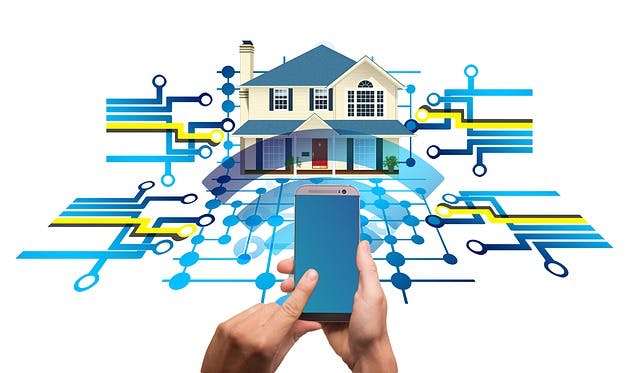
Technology will become much more efficient, and we will be able to control everything from appliances to radio volume to security from one central place. And while we're still a few years away from a fully connected kitchen, most of this technology already exists. The biggest challenge is getting devices made by different companies to communicate together.
To conclude, it is no surprise to see that smart appliances have increased dramatically in global value over the last decade - 40 million in 2010 to a staggering 26,149 million in 2019. Smart Home technology will continue to grow in leaps and bounds, and Zion Global Market Research predicts it will reach $53.45 billion by 2022.
Do you have any predictions for the Smart Kitchen and appliances in the future?